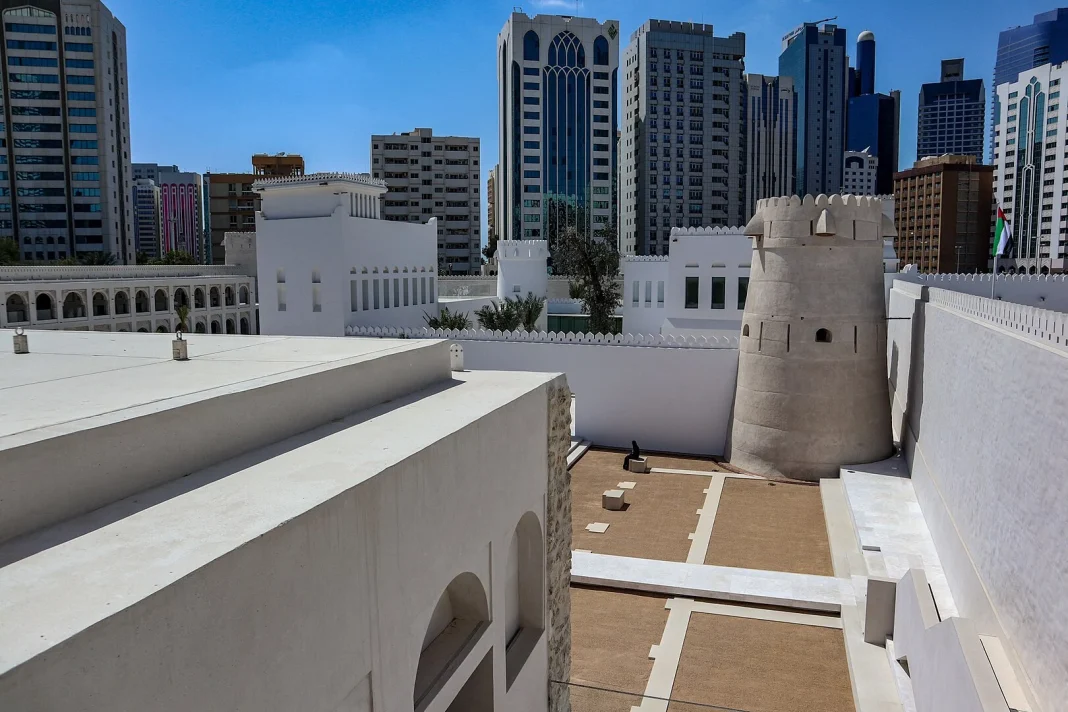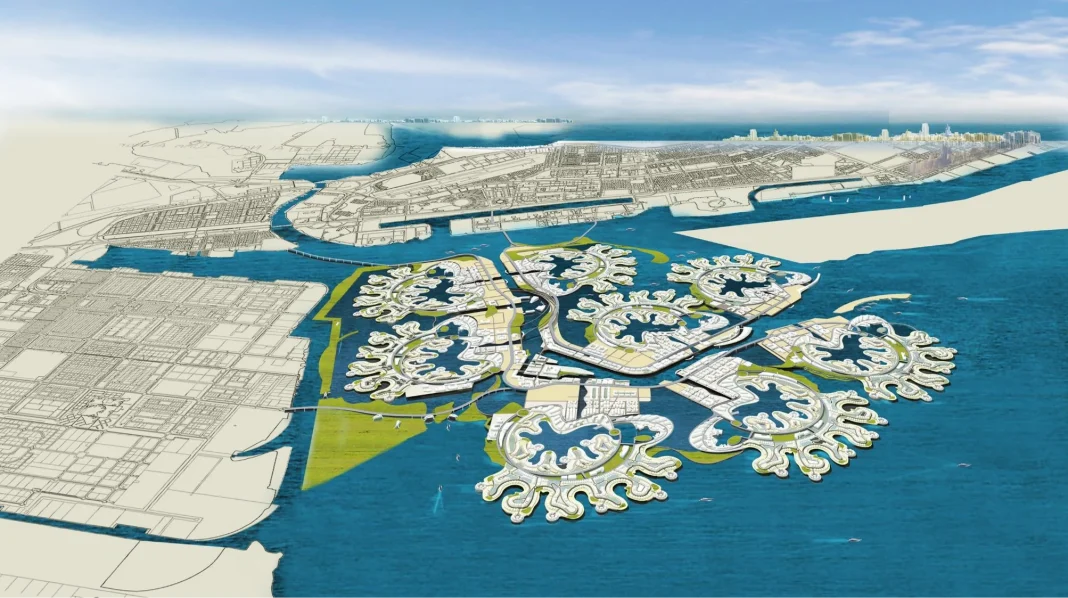The story of Qasr Al Hosn is intertwined with the birth of Abu Dhabi as a city and as the capital of a growing country. From its walls, access to fresh water was controlled, vital for the survival of the first communities. The fort was home to rulers and a political center well into the twentieth century. Its recent restoration has returned to the public a space that combines authenticity with modern museum proposals.
Visitors who come to this landmark discover more than a building: they find a living tale of resilience and adaptation. Cultural programs, exhibitions, and educational activities make the fort a hub of learning. The opening to tourism has generated a new flow of visitors seeking genuine experiences. Thus, Qasr Al Hosn is consolidated as a heritage landmark and a driver of tourist attraction in Abu Dhabi.
THE FORT THAT WITHSTOOD THE TEST OF TIME
The coral stone and limestone fort was built in the eighteenth century when Abu Dhabi was barely a coastal settlement. Its thick walls and defensive towers reflect the need to protect scarce resources and ensure the community’s security. The construction became the nucleus around which the city grew. Over time, its presence became a symbol of stability and continuity.
The restoration undertaken in the twenty-first century has restored the building to its original splendor, respecting traditional techniques and native materials. The works included the recovery of inner courtyards, walls, and ceremonial spaces. The result is a complex that combines historical authenticity with modern accessibility. Today, visitors can walk through corridors and rooms that narrate the evolution of Abu Dhabi from its origins to the present.
A SPACE FOR MEMORY AND EDUCATION
The fort has become a living museum, where younger generations can connect with their roots. Permanent exhibitions display everyday objects, ancient weapons, and documents that illustrate life in the Emirates before oil. Pedagogy is combined with the emotion of walking through a place full of history. Each room invites reflection on national identity and the value of preservation.
In addition to collections, workshops, talks, and school activities are organized to bring history closer to students and families. The goal is for heritage to not only be contemplated but also lived and understood. Interaction with specialized guides enriches the experience and sparks curiosity in visitors. Thus, Qasr Al Hosn becomes an open classroom that transmits knowledge and cultural pride.
QASR AL HOSN AS AN EMBLEM OF ABU DHABI
The capital of the United Arab Emirates has experienced rapid growth, but maintains in Qasr Al Hosn a symbol of continuity. The fort reminds us that modernity is built on solid historical foundations. Its presence in the heart of the city is a reminder of the importance of roots. The duality between skyscrapers and ancient walls defines Abu Dhabi’s urban identity.
The government has promoted restoration as part of a strategy for cultural preservation and tourism promotion. Opening to the public has generated a new attraction in the city center, complementing the offer of museums and contemporary spaces. The fort is integrated into a cultural circuit that enhances Abu Dhabi’s image as a global destination. Thus, tradition and modernity coexist in the same space.
CULTURAL TOURISM AS A DRIVER OF GROWTH
The arrival of international visitors has transformed the role of the fort in the local economy. Tourists seek authentic experiences and find in Qasr Al Watan a tale that connects past and present. The economic impact is reflected in nearby hotels, restaurants and businesses. Cultural tourism becomes an engine that diversifies the offer beyond luxury and beaches.
Authorities have designed programs that integrate guided tours, traditional shows, and interactive activities. The objective is to offer a range of proposals that attract both residents and foreigners. The combination of history and entertainment ensures a complete and memorable experience. In this way, the fort becomes a key part of Abu Dhabi’s tourist strategy.
ARCHITECTURE THAT TELLS A LIVING STORY
The architectural details of the fort reveal the adaptation of the inhabitants to an arid environment. Watchtowers, inner courtyards and thick walls show ingenious solutions to the climate and external threats. Architecture becomes a language that conveys resilience and creativity. Each stone tells a story of survival and community.
The restoration has respected these elements, incorporating traditional techniques such as the use of coral and limestone. Local artisans participated in the process, ensuring historical fidelity and cultural continuity. The result is a space that combines aesthetic beauty with heritage value. Thus, the architecture of Qasr Al Hosn becomes a tangible testimony of Abu Dhabi’s evolution.
A FUTURE THAT RESPECTS THE PAST
The fort is not just a vestige, but a dynamic space projected towards the future. Cultural activities, festivals and international collaborations ensure its validity in the twenty-first century. Preservation becomes a collective commitment that transcends generations. Qasr Al Hosn is today a symbol of national pride and a tourist landmark.
Integration of the fort into urban life demonstrates that heritage can coexist with modernity. Visitors find a space where history is celebrated and shared. Abu Dhabi’s vision is that the past inspires the present and guides the future. Thus, Qasr Al Hosn is consolidated as a bridge between tradition and progress.


